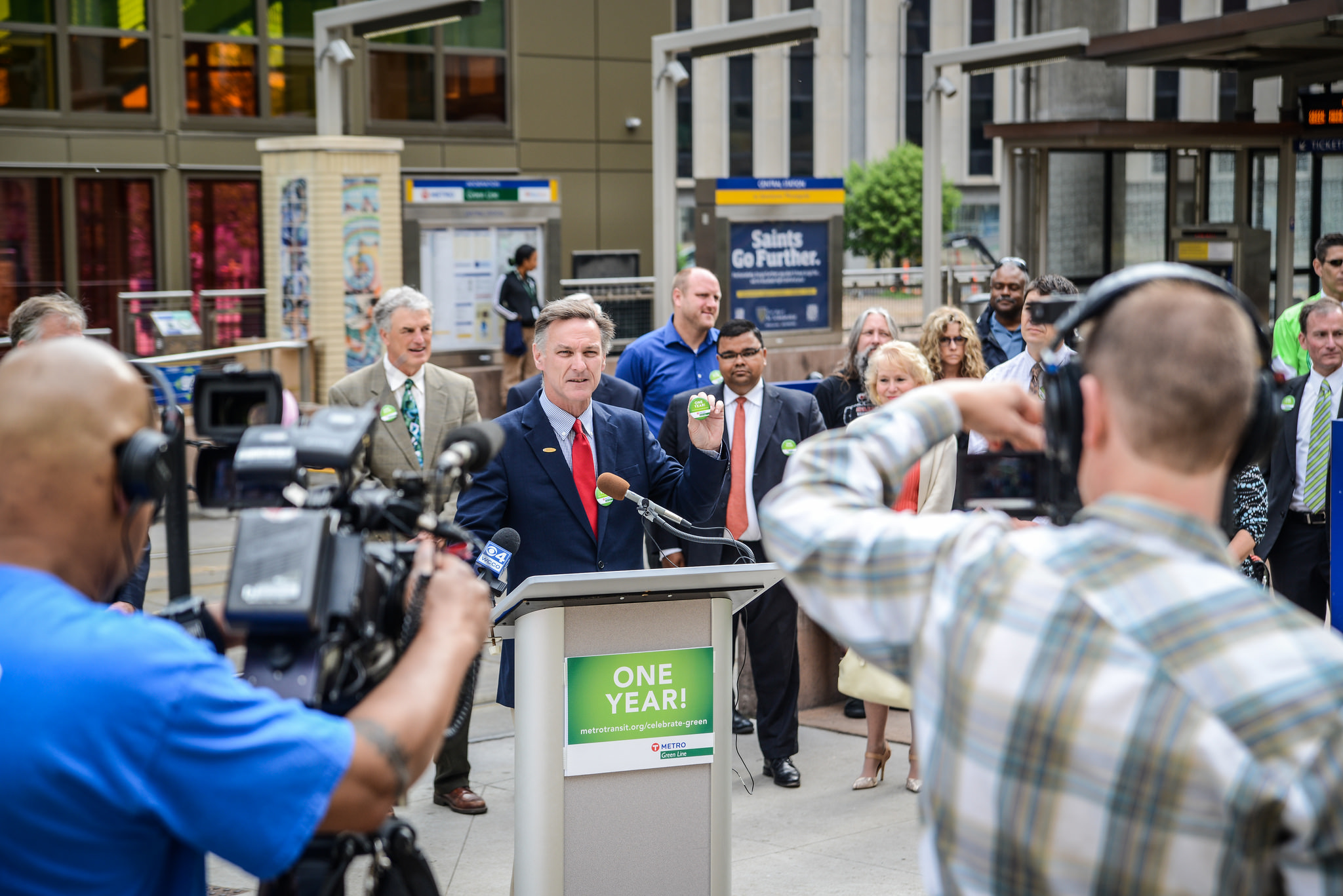 For the last eight months, Aaron Martin has used the METRO Green Line to get to not one but two jobs – one at the Town Hall Brewery in Cedar-Riverside and another at the Oceanaire in downtown Minneapolis.
For the last eight months, Aaron Martin has used the METRO Green Line to get to not one but two jobs – one at the Town Hall Brewery in Cedar-Riverside and another at the Oceanaire in downtown Minneapolis.
The ease of his commutes is a near-daily confirmation that he made the right decision moving last fall to an apartment in St. Paul’s Hamline-Midway neighborhood, where he can walk just a few blocks to the Fairview Avenue Station.
“I get frustrated with traffic, so the trains are really a godsend for me,” Martin said as he traveled westbound on his way to work.
Such stories have become commonplace since the Green Line opened a year ago. More than 11.1 million Green Line rides have been taken since light-rail service began on June 14, 2014, and average weekday ridership is nearly 25 percent higher than anticipated.
On Monday, Martin and other customers were invited to celebrate the Green Line's success by wearing Green Line anniversary buttons that can be used to receive discounts at businesses along the corridor (those who didn't receive a button can simply show retailers an image of it). Businesses and local leaders who had high hopes when the Green Line opened also took the day to reflect on how the Green Line has re-shaped the urban landscape.
Standing alongside business owners and supporters at Central Station, St. Paul Mayor Chris Coleman said he found it hard to believe the Green Line had been in service just a year given how much a part of the city’s character it has become.
He pointed to redevelopment projects in downtown St. Paul and along University Avenue as a testament to the Green Line’s “catalytic” effect and the promise it holds for helping “build on the future of St. Paul.” Around $3 billion in development has occurred or is planned within a half-mile of the Green Line.
General Manager Brian Lamb pointed to the ways the Green Line has expanded cultural and recreational opportunities, such as the new possibility of light-rail themed double-headers featuring the Minnesota Twins and the St. Paul Saints. (Several times this season, the Saints and Twins play home games on the same day, allowing fans to catch action at both transit-friendly ballparks.)
More importantly, though, Lamb said the Green Line has expanded access to opportunities.
A study from the University of Minnesota’s Accessibility Observatory released this week found that workers in St. Paul could, on average, reach over 2,000 more jobs by transit than they could before the Green Line opened. Job accessibility in some areas more than doubled due to the Green Line and improvements in connecting bus routes, the U of M study found.
“The Green Line is about more than rides, it’s about access,” Lamb said.
Though she doesn’t use the Green Line to get to work, St. Paul resident Dana Gehant values her ability to use the Green Line on her daily visits to her mother in Minneapolis. Like Martin, she grew tired of driving and gave up her car in favor of transit. Her hope now is that the Green Line will lead to further light-rail expansion in the region.
“My only complaint is that it (the Green Line) doesn’t go further,” she said.
> Green Line residents are enthusiastic about light rail
> Connections ground businesses, arts on Green Line corridor
> Green Line has been magnet for housing development
> MPR: Green Line success driving transit, business hopes
> Star Tribune: A year into Green Line, development on University Avenue is still looking to pick up speed
> Pioneer Press: With Green Line, 2,000 more jobs accessible, study finds